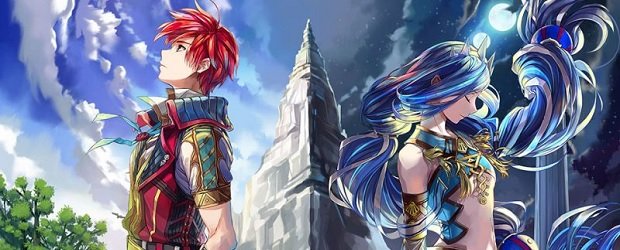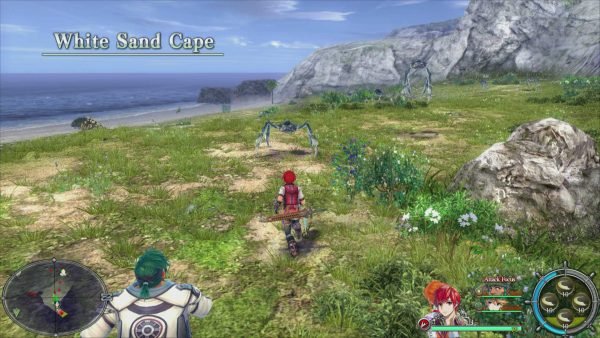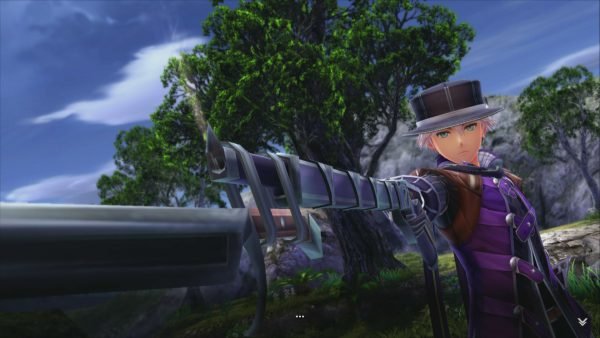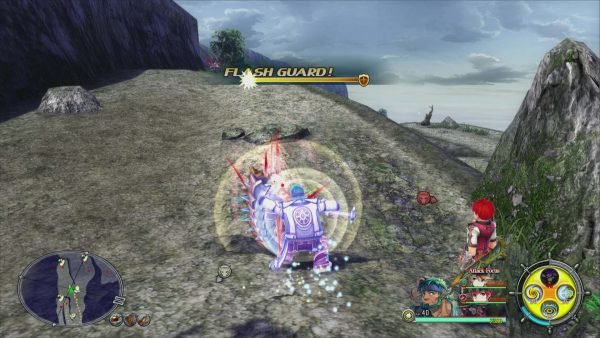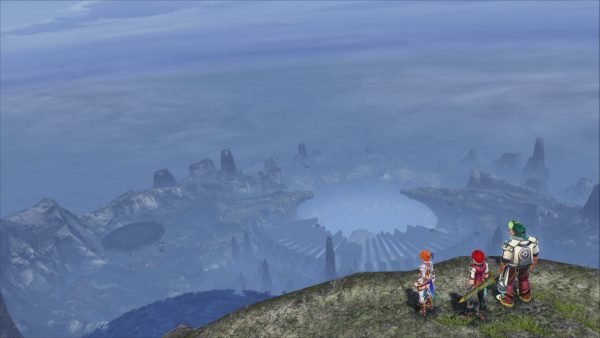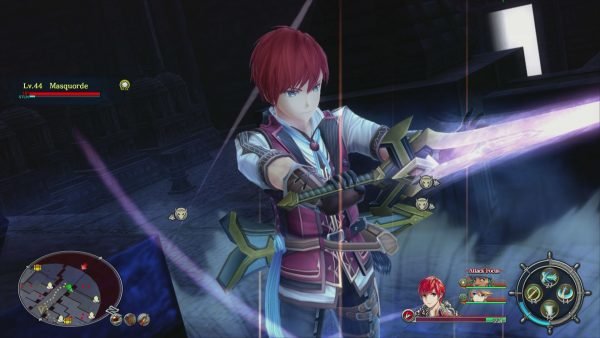Switch to: German
As the latest entry in a series spanning over 30 years, Ys VIII certainly has a legacy to live up to. Thankfully, the game delivers what fans have come to expect from the series while also introducing a more expansive story than usual.
Like many previous Ys games, Ys VIII opens with red-haired protagonist Adol on the search of a new adventure. Working as a deckhand on the passenger ship the Lombardia, the game introduces you to the crew and people onboard the ship. Unsurprisingly though, things go wrong quickly, as a large sea creature destroys the boat and leaves Adol stranded on a seemingly deserted island.
You quickly learn that the place you have washed up, Seiren Island, is full of dangerous monsters. Thus begins Adol’s journey to find the survivors of the shipwreck and attempt to find his way off the island. Even during the prologue of Ys VIII, it’s evident that the game has a much larger focus on story than previous entries. Starting with Ys Seven, Falcom have been slowly increasing the amount of story content that each game has, which has lead to Ys VIII being the longest one so far by a wide margin.
The story itself isn’t too bad, as you find more passengers and discover new secrets about the island. However, the charm of Ys VIII is marred by the somewhat lacklustre localisation by NISA. Characters can come off as more bland than intended, and there are more than a few lines that definitely haven’t been proofread. Adding to this are various strange naming choices for areas (the now infamous “Big Hole” being one of them), along with mistakes in item descriptions. These issues don’t make it impossible to enjoy the story overall, but they’re disappointing considering the excellent localisations by XSeed for earlier Ys games. As a final note on the English localisation of Ys VIII, the voice acting is rather hit and miss. Dual audio is included, but more effort in the English dub would have been appreciated.
NISA have recently announced that a revised version of Ys VIII’s localisation is is in the works, including redone voice acting if necessary. While this is a step in the right direction, this should not have been needed in the first place. Hopefully NISA will learn from their mistakes for future releases, Falcom related or otherwise.
It’s one thing to have a decent story, but Ys games have always been known for their fast-paced gameplay. Ys VIII shares the same battle system as Seven and Celceta with minimal changes. This means party based combat is back for a third time. Normal attacks build SP that you use for skills, these being your main way of dealing damage. Some enemies are weak to specific types of damage, so you’ll always want characters with one of each damage type in your party.
Also returning are the flash guard and flash move. The L1 button is used to dodge at any time, but if you time it just before being hit flash move is activated. This briefly slows down everything aside from your party, giving you a chance to reposition or attack before enemies are able to react. On the other hand, flash guard allows you to negate damage entirely, with the added bonus of a temporary attack buff. The timing on flash guards is much stricter than flash moving and will likely lead to taking damage if you fail. This means that more confident players can rely on using flash guard to defeat enemies faster, while others can just used dodging as a safer alternative.
As with every Ys game, Ys VIII’s bosses are the real star of the show. These will test your knowledge of the game’s mechanics and are generally where most deaths will come from. Other than a couple of relatively disappointing bosses, the rest are fun to fight with varying attack patterns and abilities. On lower difficulties, bosses can be stunned after a certain amount of damage, offering a brief respite before they get back up to attack again.
Combat ends up feeling faster than both Seven and Celceta thanks to better performance on the PS4 version of VIII. Not being locked to portables is a massive improvement, since both aforementioned games suffered from noticeable FPS issues. Action games like Ys really benefit from higher framerates, and for the most part Ys VIII runs at a smooth 60 FPS. There are some drops when many enemies are on screen, though this is rare.
The combat system isn’t perfect though. You gain a lot of SP from a single basic attack, so you’ll often find yourself just spamming skills to deal with regular enemies. The party system also brings along the same problems that were present in Seven and Celceta. You effectively have access to three health bars and death isn’t as big an issue as earlier Ys games. This, combined with the liberal amount of save points that fully heal your party, leads to the game generally being pretty easy. This does make Ys VIII a good game for newcomers, but for series veterans there wont be too much of a challenge. The addition of inferno mode that speeds up enemy attacks and limits healing items does help with the difficulty, but it feels like the lower item limits should have been in all modes.
Exploration has seen the biggest improvement in Ys VIII. Seiren Island has a good selection of areas and dungeons to discover. From the opening beaches to the ruins of a lost civilisation, the game never stops mixing things up. Something that further helps with exploration is the reintroduction of jumping. This is nothing new to the Ys series overall, but has been missing from most of the recent titles. One problem I had with Seven and Celceta was how flat many of the areas could feel due to the lack of jumping. Now that it’s back, Falcom were able to create environments with more verticality.
Being an updated port of a Vita game, the PS4 version of Ys VIII is held back in a few ways. Areas aren’t particularly large most of the time, meaning you’ll end up going through a lot of loading screens when travelling for longer periods of time. Loading is fast, but it’s unfortunate that they could remove them for this updated version of the game. There are also times where you wont be able to jump off hills or higher up areas thanks to invisible walls, though this doesn’t become a big issue.
As you further explore the island, survivors that you save band together to form the aptly named Castaway Village. The more people you find, the more facilities that become available in the village. From weapon upgrades to healing items, this is where you’ll spend you time gearing up characters and taking on sidequests for the villagers. From time to time the village will be attacked by monsters, leading to interception missions.
During interception missions waves of enemies will try to break through the gate leading to Castaway Village. Before taking on these missions, you can create various defences to help delay the monster’s attack. The villagers themselves also aid you with abilities that improve as they begin to trust you more. Suppression missions act as somewhat the opposite of interceptions. Here, you tear through enemies to destroy nests and eventually defeat a boss monster. These mission types don’t change up gameplay too much, but add a little extra variety on top of the usual monster slaying.
This wouldn’t be a review of an Ys game without mention the excellent soundtrack. Falcom has always been known for producing some amazing songs, and Ys VIII is no different. Whether running across a beach or fighting a powerful enemy, there’ll always be a memorable song playing in the background. I’d honestly say Ys VIII’s soundtrack is one of Falcom’s strongest overall.
Conclusion
Even with the poor localisation bringing down the game’s story, Ys VIII is still a great game overall. The fast-paced combat and energetic soundtrack are the best they’ve ever been, and show that Falcom still know how to make amazing action games.



